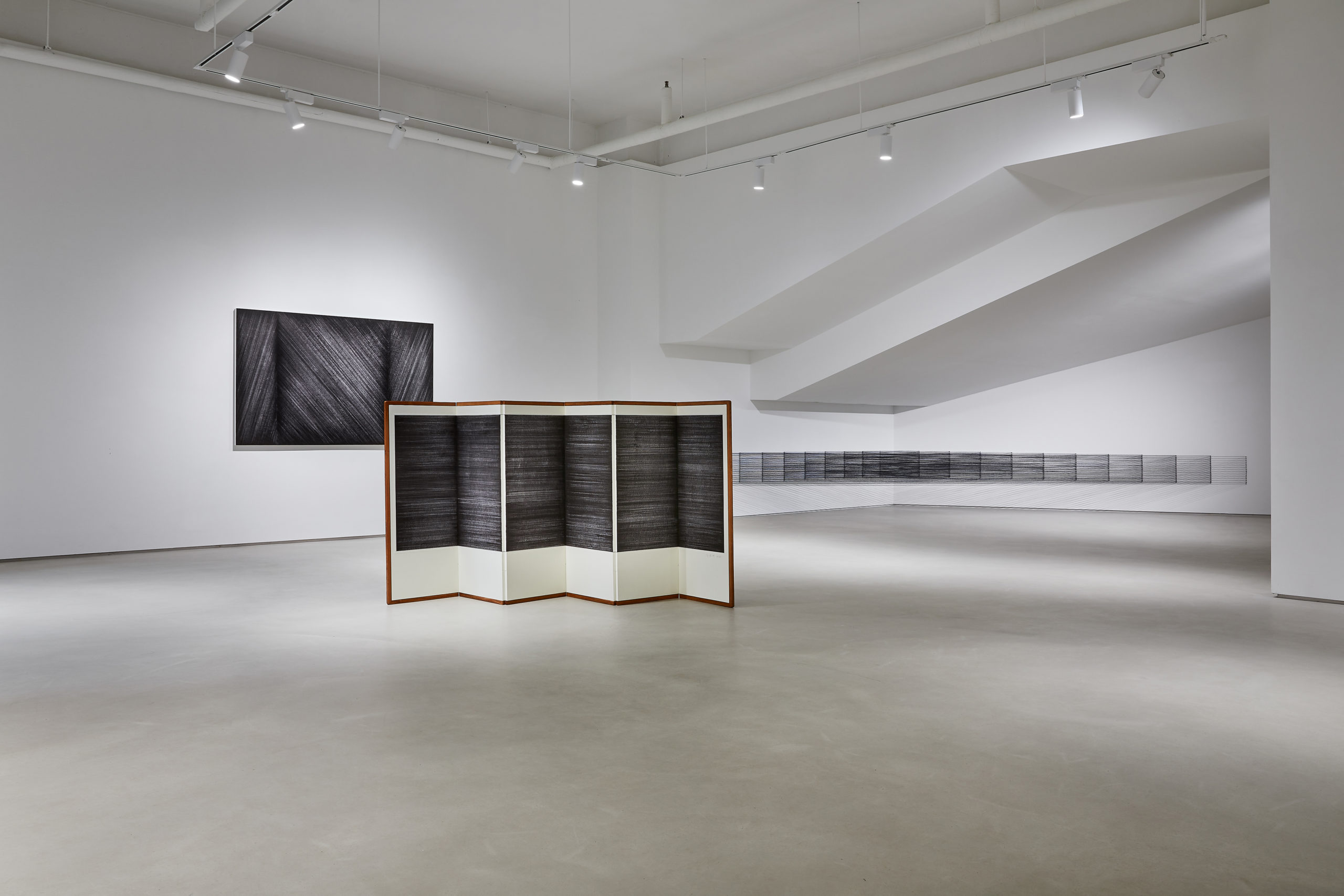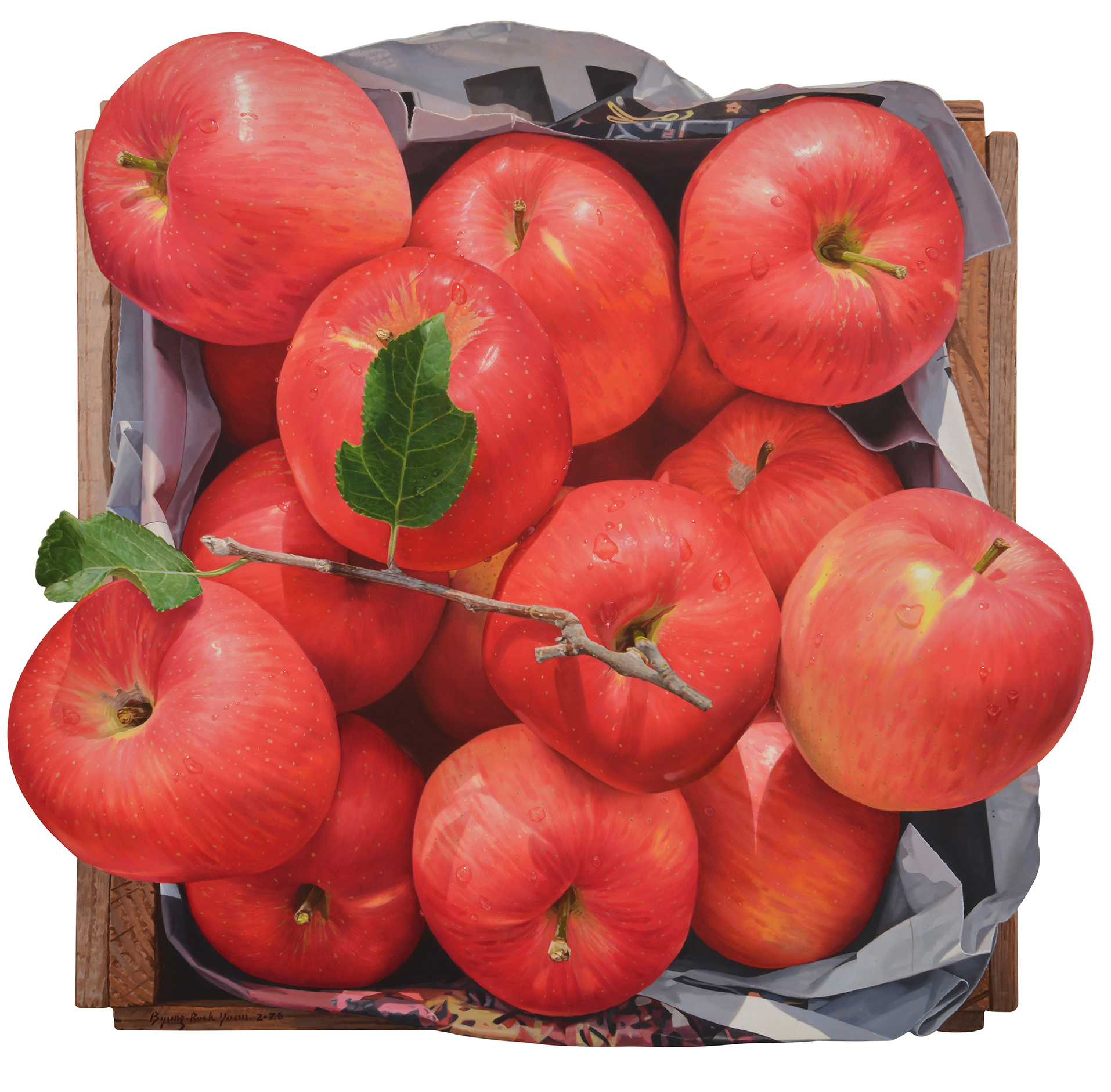Ichigo Ichie
| [GALLERIES] Whitestone Gallery
2021. 6. 26 – 8. 5
Etsu Egami

“I like cherry blossoms that bloom for a short period of time. I cherish the faces of people passing by. Although there are more misunderstandings and dislocations, they are (after all) an opportunity and a beginning to understand life and exchange information.”
Etsu Egami, August 2021

Whitestone Gallery H Queen’s is delighted to present a solo exhibition by the Japanese artist Etsu Egami. “Ichigo Ichie”, is the title of Egami’s colorful works, loosely translated (from Japanese to English) from a spiritual dictum to accept the transience of life to the more colloquial Once in a Lifetime. In Japanese, this phrase is as deep as Zen Buddhism, elevating appreciation of the fleeting moment to the ideal approach to life. In English, ‘Once in A Lifetime’ is the theme of a rock band’s anthem, as singer David Byrne of Talking Heads repeatedly asks, “Is this not my beautiful house? Is this not my beautiful wife? How did I get here?” The difference between the tone of each language is a perfect example of the mistranslation, miscommunication and misunderstanding that Egami has been exploring since school, or perhaps throughout her life.
Egami is a leading representative of the third generation of postwar Japanese contemporary artists. Born in a suburb of Tokyo in 1994, Egami spent many of her childhood years in the United States and Europe, which partially explains her natural inclination to explore mis-translation. She is currently pursuing her PhD at the Central Academy of Fine Arts in Beijing, where she completed her BFA (2016) and MFA (2019), spending a year in between at the Karlsruhe University of Arts and Design. Her choice of professors also illuminates her outlook on art, now working with Liu Xiaodong, the leading narrative painter in China today and in Germany, with Omar Fast, a conceptual filmmaker whose works challenge the notion of linear storytelling and the belief in the artist’s capability to tell the truth. Combined, these mentors have taught Etsu Egami well; she now has mastered painting and portraiture as a kind of ephemeral truth and developed an approach to painting that deconstructs and rearranges the traditional depictions of faces in art history.

Faces are a primary subject matter for Egami, who must have spent years staring into another’s eyes to try to figure out what they were saying to her as she traveled through the US, Europe, and later China. In these places where her native Japanese is neither spoken or readily understood, she personally encountered an inability to communicate. Those moments where there was a total lack of communication—or understanding reach through voice tone and facial expression—are deeply rooted in this artist’s psyche. So, we encounter face-after-face, not a legacy of historic figures or a roster of contemporary celebrities, but ordinary folks that Egami encounters along the way of preparing a show.
Depictions of faces are controversial and even dangerous these days. There is a great deal of animosity towards facial recognition technology, for example, which people fear as a means of controlling activity and invading the subject’s privacy. At the same time, people are posting an unlimited stream of “selfies” on social media, relinquishing any rights to privacy without care. This pervasiveness of facetime is inspiring to the artist, but also worthy of further investigation. As opposed to Richard Prince who merely appropriated posts from Instagram, Egami has reinvented how to approach a face, how to see a face and how to paint a face. Most of all—as any of us looking at baby pictures or drivers’ licenses know—the face is ever-changing and ephemeral. It ages, it acts out emotion, it may even reveal a kind of truth about the person. But it is, unlike art, impermanent. How to capture this quality without destroying portraiture?

Egami has been incorporating portraits into her installations since her graduation work, “This is not a Mis-hearing game” (2016). Trying to capture the ‘sound’ of communication as expressed on the face of her subjects, she started an interactive, socially engaged performance. In it, understanding among the participants deteriorates as they try to repeat the words said to them by the previous player. In its completion, Egami created a series of portraits of each of the participants. These pictures are the beginning of rendering the face in broad strokes and sheer layers of paint, quite unlike Old Master paintings or contemporary artists. In these loose interpretations of humanity, Egami cleverly creates a “glitch” or visual white noise. Images created by computers often have these glitches, e.g. a deterioration into pixels or an erroneous smear of ink from a faulty printer. Several painters have been trying to approach this new aesthetic because the fault lines of perfection offered by new media are much more interesting than the images produced seamlessly by software and apps.
In the Rainbow series from 2020, broad strokes of sheer colors emerge as features of a face against a backdrop of parallel lines, like a monitor on the fritz. Or in her Social Distancing series, bodies come into focus from a haze of pastel clouds. And in the series, Autre, famous authors are seen but not seeable, as if their power and influence has waned over time. These various forms of “glitch” are meant to convey the ephemerality of time and the beauty of that impermanence. Yet, no one approach is definitive or finite. In Rainbows, there is the fleeting moment of a first encounter that never can be reenacted or preserved. In Social Distancing, there is the miscommunications between human beings, the longing and desire that comes from distance, which according to the old phrase, ‘makes the heart grow fonder’. In Autre, fame and significance cannot always endure the passage of time, no matter what the glory and greatness of the subject’s achievements. In fact, it is fascinating that Egami has chosen authors who are known for their narratives packed with social commentary. The artist herself is trying to achieve something akin to Zola or Tolstoy, simultaneously reinventing narrative as a metaphor for meaning.

All of the exhibited works were made in Beijing during the first wave of the pandemic when travel was impossible and their emphasis on time is particularly suited to the period of lockdown when we all had to live “one day at a time.” The pandemic frames these works and alters our initial understanding of the phrase, Ichigo Ichie. The aura of death hovers on the surface of these works, never requiring us to see its impact but the impact is there nonetheless. Of the many paintings created in the past year, Etsu Egami’s paintings are some of the most meaningful. Perhaps because it is embedded in her DNA, it seems that Egami has been investigating a kind of social distancing—distance due to language or cultural differences—throughout her career. She is not jumping on a bandwagon or worse yet, capitalizing on a worldwide disaster. In her panopticon of faces, we see humanity. These paintings make us want to meet those figures and start a conversation, maybe to perpetuate more confusion or maybe to find out that we are capable of bridging our differences and understand each other.

Whitestone Gallery
7-8/F, H Queen’s, 80 Queen’s Road Central, Hong Kong
info@whitestone.hk
+852 2523 8001











